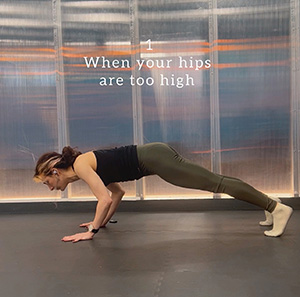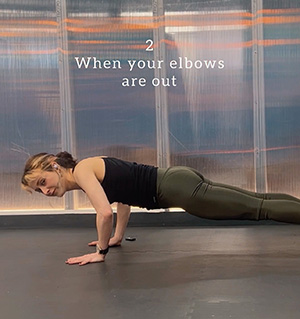I bet you have heard your yoga teacher cueing you into Chaturanga Dandasana, low plank pose, many times but probably it has never been explained properly. It is so because Chaturanga is a pose we use while transitioning (E.g. Plank > Chaturanga > Upward Facing Dog).
I will point out three common mistakes I have seen in my students. Also, I will explain how to practise this pose correctly whatever your level is.
Before we start, I want you to remember that mastering something is only possible by practising it. Chaturanga is not an easy pose even though you can hear the name in almost every yoga class. So, do not get discouraged but find ways to simplify the pose and move on without focusing on the goal.
LET'S GO.
1. When your hips are too high

You should consider your body aligned as one line. So, your hips should not reach up too high as if you are in downward facing dog. This is a common mistake for plank pose as well. Make sure your heels and toes are aligned, and gluteal muscles are activated. Lowering your chest down more than you can, or not activating your core can cause lifting your hips too high.

Nope. This should not be happening. I know it is easier for many of us to lower the body by reaching out with the elbows. But you must hug the elbows in towards the ribcage while your elbows are pointing straight back. Important point: Do not stick your elbows to your ribcage too tight. This might cause a wrist/shoulder injury as your weight will be unevenly distributed and your core will be less active.

I believe this is my favourite cue to give during a class: Move your shoulders away from your ears. OH, THE DIFFERENCE IT CREATES! So, when we lower the body halfway down, your neck should be nice and long. Another important point here is to rotate your shoulder tips either up or forward. If your shoulders are looking down, this might cause a shoulder injury in the long run. Placing your shoulders correctly will also provide you an open chest (so your collarbone is wide).
General tips for these three mistakes:
- You can always modify the pose my bringing your knees on the floor
- Shoulder stability is super important in this pose. Stabilize your shoulders by broadening your chest & rotating your elbows back
- You can place yoga blocks under your shoulders to stabilize your body
- Use your whole body, not only your wrists and shoulders (legs, core, bum)
- Spread your fingers and use your hand lock (hasta bandha) to avoid any wrist injuries (Check my blog post on hasta bandha here if you are unsure what it is)
OK. Now you have an idea. It might be a long way, but the outcome is never the goal anyway.
Keep going. Only effort counts!
